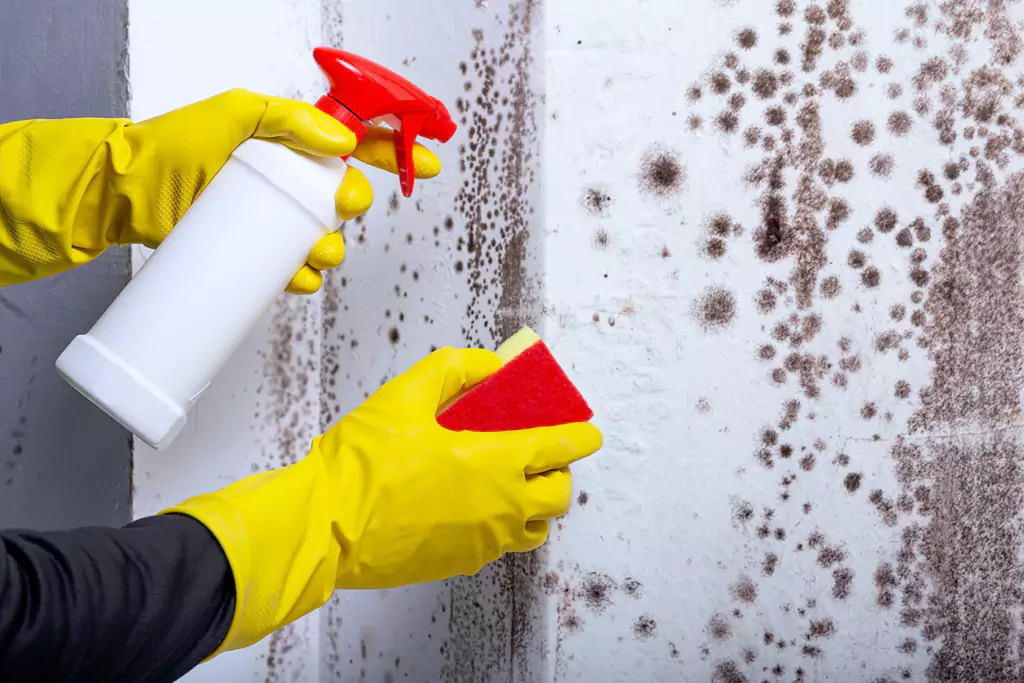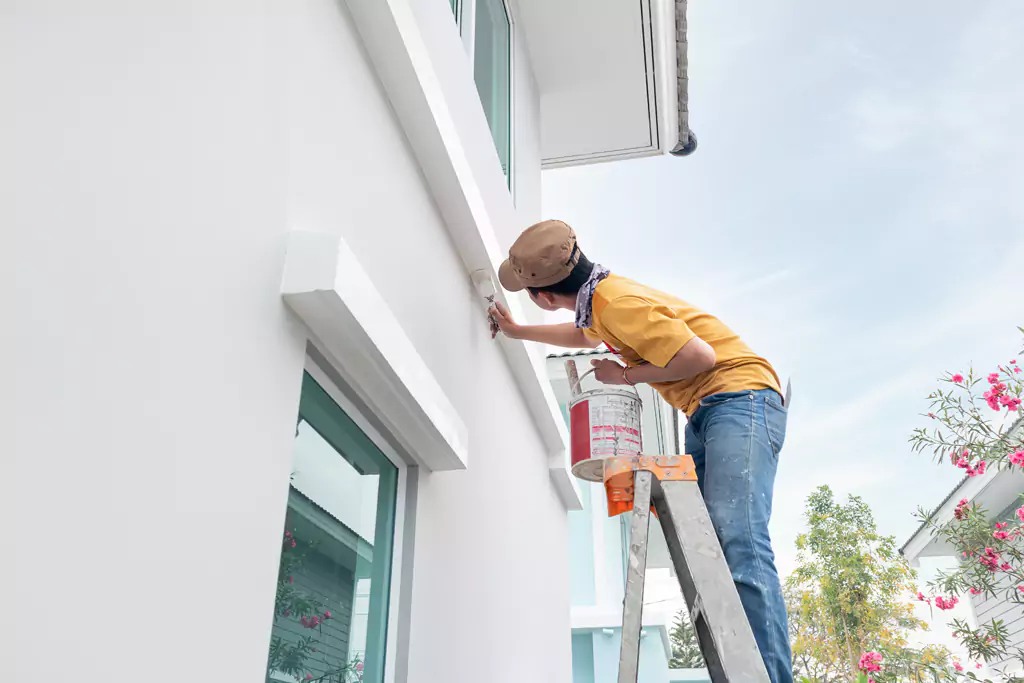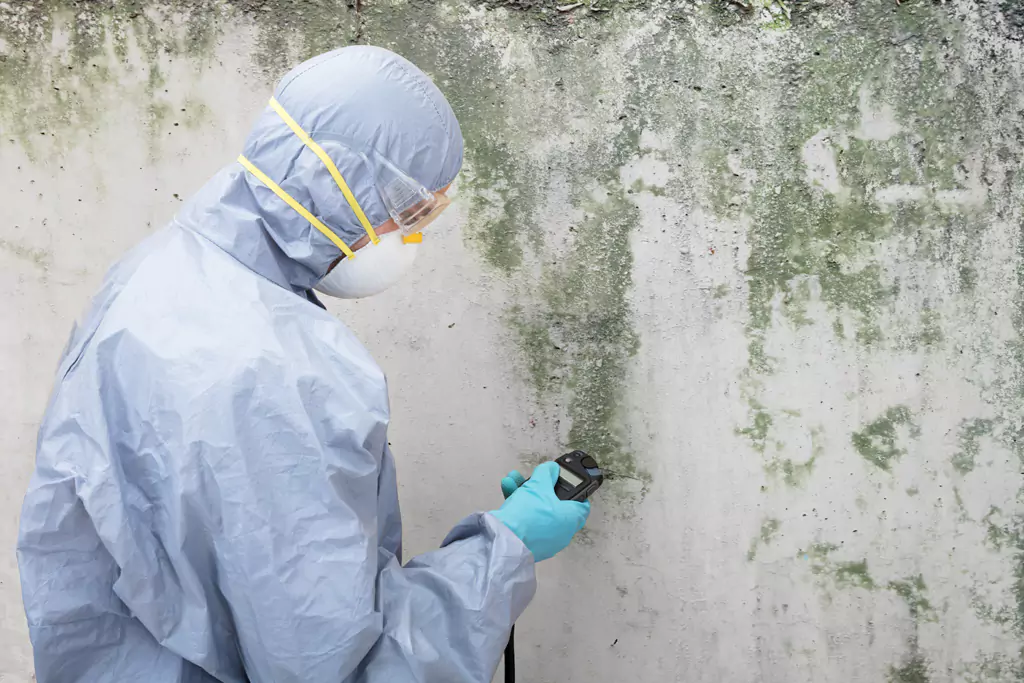Mould is a common issue that many homeowners face, especially in regions with high humidity levels or frequent rainfall. In Australia, mould will commonly grow on the south side of properties which typically get the least sun. While mould can grow on various surfaces, external walls are particularly susceptible due to their porous nature. Dealing with mould on painted walls can be a daunting task, as you need to address the problem effectively without damaging the paint. In this guide, we’ll delve into practical solutions for how to remove mould from painted walls, while also discussing preventive measures to minimise its recurrence.
Why Does Mould Occur on Exterior Walls?
Mould growth on exterior walls is a common issue that can be attributed to a combination of factors related to environmental conditions and the structure of the walls themselves. Understanding why mould occurs on exterior walls is crucial for effectively addressing the problem and implementing preventive measures.
- Moisture and Humidity: Exterior walls are exposed to weather conditions like rain, snow, and dew. When combined with high humidity levels, especially in humid regions, these surfaces become favourable for mould growth.
- Imperfections in the Wall: Cracks, gaps, and poorly sealed joints in exterior walls allow moisture to seep in, creating pockets of dampness that encourage mould growth.
- Poor Ventilation: Areas with poor air circulation, like corners and confined spaces, trap moisture against exterior walls. Stagnant air and moisture create conditions that promote mould growth, especially when combined with warm temperatures.
- Lack of Sunlight: Exterior walls that don’t receive adequate sunlight are more prone to mould growth. Shaded areas or those with limited sunlight retain moisture for longer periods, offering a suitable breeding ground for mould.
- Water Intrusion: Water intrusion from leaks in the roof, faulty gutters, or inadequate drainage can result in moisture penetrating exterior walls. Lingering moisture fosters an environment conducive to mould growth, accelerating its development.
- Lack of Maintenance: Mould does not decrease with time, it only increases when not managed. Neglected maintenance allows dirt, debris, and organic matter to accumulate on exterior walls. These substances combined with moisture serve as nutrients for mould, aiding its spread and colonisation.
- Climate and Weather Patterns: Climates with consistently high humidity and frequent rainfall, like coastal areas, create conditions where exterior walls are more prone to retaining moisture. Such conditions promote mould growth.
How to Remove Mould from Exterior Walls Without Damaging the Paint?
Removing mould from painted walls requires careful attention to prevent damage to the paint while effectively eradicating the mould. Here’s a step-by-step approach on how to remove mould from walls without damaging paint:
- Gather Supplies: You’ll need gloves, a mask, safety goggles, a scrub brush with soft bristles, a mild detergent, water, and a bucket.
- Protect Surrounding Areas: Cover nearby plants, furniture, and surfaces with plastic sheets to prevent accidental damage or contamination.
- Prepare Cleaning Solution: Mix a mild detergent with water and bleach to create a cleaning solution. Avoid using harsh chemicals, as they might damage the paint.
- Test in an Inconspicuous Area: Before proceeding, test the cleaning solution on a small, hidden area of the wall to ensure it doesn’t affect the paint.
- Scrub Gently: Dip the scrub brush into the cleaning solution and gently scrub the mould-affected areas. Use circular motions to avoid damaging the paint. Begin from the lowest point and progress upwards to avoid streaking.
- Rinse Thoroughly: After scrubbing, rinse the area with clean water using a sponge or clean cloth.
- Drying: Allow the wall to dry completely. Ensure proper ventilation to prevent moisture from returning.
- Preventive Measures: Apply a mould-resistant primer and paint to the affected areas to discourage future mould growth.
By following these steps, you can effectively remove mould from painted exterior walls without causing damage to the paint. Regular maintenance and preventive measures will help keep mould at bay and maintain the integrity of your painted surfaces. You can also have a look at this guide on what is mould?
Why Mould Removal Can’t Be Ignored?

Mould removal is not just about maintaining the aesthetic appeal of your home; it’s also crucial for your health and the structural integrity of your property. Here’s why mould removal matters:
- Health Concerns: Mould can trigger allergies, respiratory issues, and other health problems. Removing mould ensures a healthier indoor environment for you and your family.
- Long Term Damage: Mould has the potential to grow deep into the substrate of your walls, resulting in expensive repairs if not addressed promptly.
- Aesthetic Value: Mould can discolour and mar the appearance of painted walls. Removing it restores the visual appeal of your home.
How to Prevent Mould in Your Property?
Prevention is key to avoiding recurrent mould issues. Here are some preventive measures for removing mould from exterior walls of your property:
- Moisture Management: Address any leaks, plumbing issues, or water infiltration promptly. Keep an eye on areas prone to dampness, such as basements, ensuring your gutters are clean, and that any leaks are sealed up.
- Ventilation: Ensure proper ventilation and facilitate the circulation of fresh air.
- Regular Cleaning: Regularly clean areas where moisture might accumulate.
- Mould-Resistant Products: Opt for mould-resistant paints and materials, especially in areas prone to moisture exposure. These products provide an extra layer of protection against mould growth.
- Quick Repairs: Fix any cracks, leaks, or water damage immediately. Timely repairs prevent water intrusion, which is a primary cause of mould.
- Professional Inspections: Consider scheduling regular mould inspections, especially in areas with a history of moisture problems. Experts have the ability to recognise potential problems before they escalate.
When Should You Call Professional Mould Removal Experts?

Calling professional mould removal experts is advisable in certain situations to ensure the effective and safe eradication of mould infestations. While minor mould & mildew on painted walls can often be managed with DIY methods, there are instances when professional intervention becomes necessary.
- Extensive Infestations: If the mould growth covers a large area, spanning several square feet or more, it’s a clear indication that the problem has escalated beyond a manageable scope. Professional experts have the tools, knowledge, and experience to handle extensive mould contamination thoroughly.
- Hidden Mould: Mould can thrive in hidden or hard-to-reach areas, such as within wall cavities and hard to access areas. Professional mould removal experts possess the expertise to identify and access such concealed mould, preventing its unchecked spread.
- Health Concerns: Certain individuals, such as those with allergies, respiratory issues, or compromised immune systems, are more susceptible to mould-related health problems. If mould growth poses a potential health risk, it’s essential to seek professional help to minimise exposure and ensure comprehensive removal.
- Recurrent Mould: If you’ve attempted to eliminate mould multiple times, yet it keeps reappearing, there might be underlying issues that require professional assessment. Professionals can identify the root cause of recurring mould and provide lasting solutions..
- Structural Damage: Mould & moisture can deteriorate building materials over time, leading to structural wall damage. If you suspect that mould has compromised the integrity of your property, it’s wise to consult experts who can assess the extent of the damage and propose appropriate remediation.
- Complex Remediation: Some mould species, like black mould, are more hazardous and challenging to remove. Dealing with these types of mould requires specialised techniques and equipment that professionals are trained to handle.
Conclusion
Mould growth on painted exterior walls is a challenge that requires prompt action. By understanding the causes of mould, implementing effective removal methods, and adopting preventive measures, you can keep your home mould-free and maintain its aesthetic appeal. Remember, the goal is not just to eliminate mould for visual reasons, but to safeguard your health and the longevity of your property. While DIY approaches can work for smaller cases, never hesitate to call in the professionals like Exterior Clean Melbourne when dealing with extensive or hidden mould issues. With the right approach, you can maintain a healthy, mould-free living environment for you and your loved ones.
Frequently Asked Questions About Mould
To remove mould from brick walls, create a cleaning solution with dilute parts water and bleach. Apply the solution using a brush or spray bottle and let it sit for 15-20 minutes. Scrub the affected areas with a stiff brush and rinse with water. For stubborn mould, you might need to repeat the process. Ensure proper ventilation and wear protective gear during cleaning. Prevent future mould growth by addressing moisture issues and improving ventilation in the area.
Prevent mould’s return on walls by tackling moisture sources like leaks, improving ventilation. Apply a mould treatment regularly to deter and consider using mould-resistant paint if you re-paint. Swiftly address any mould emergence to prevent its spread. Regularly inspect walls and maintain gutters to hinder water accumulation.
Bleach does effectively kill mould but depending on the surface can also cause damage as it is , highly corrosive and can damage the paint, leading to discoloration and deterioration over time. Always perform a spot test in an inconspicuous area before applying any cleaning solution to ensure it doesn’t adversely affect the paint.
Common signs of mould in homes include musty odours, visible mould growth on walls including moss, green algae, black streaks, ceilings, or surfaces, discoloured patches, and an increase in allergic symptoms like sneezing or coughing. Peeling paint, warped walls, and a persistent feeling of dampness can also indicate mould issues. If you suspect mould, it’s important to address it promptly to prevent further growth and potential health concerns.
Painting over mould on exterior walls is not a recommended solution. Mould can continue to grow beneath the new paint layer, causing further damage and potentially compromising the paint’s adhesion. It’s important to ensure proper mould removal on exterior walls before repainting. If you encounter mould, follow proper removal methods and ensure the affected area is completely dry and mould-free before applying new paint. This approach ensures a clean and long-lasting paint job.
